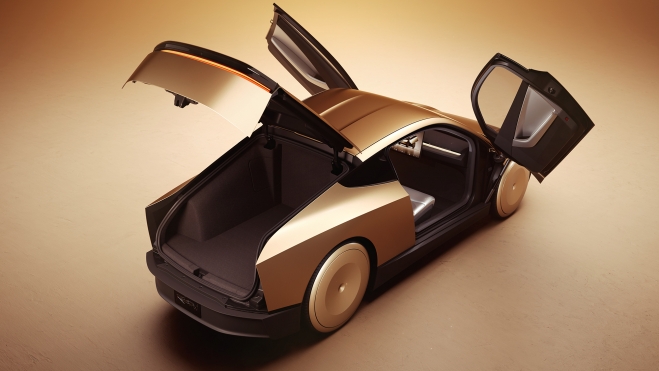TESLA

Tesla Robotaxi may boast 93% wireless charging efficiency and start to top up within a second on omnidirectional pad
During the Robotaxi unveiling event, Elon Musk mentioned that it is the first Tesla car without a NACS port that is designed for inductive charging, and Tesla has now fleshed it out in more detail.
Tesla's 2023 acquisition of the German engineering team from Wiferion has resulted in 90%+ wireless charging efficiency for the Robotaxi, it seems.
Tesla's chief designer already disclosed that the company is working on a wireless charging solution for its vehicles during a Cybertruck test ride with Jay Leno. It is reportedly being called Project Garfield internally, and Franz Von Holzhausen said it will feel like "you just pull up in your garage, drive over the pad, and you’re charging."
The Wiferion technology boasts 93% efficiency, and, coincidentally, Tesla had to correct MKBHD's opinion that the Robotaxi's inductive charging will be inefficient to the tune of at least 25% energy loss, with the enigmatic "it is well above 90%."
Elon Musk also chimed in, saying that "there is no meaningful efficiency difference between inductive and conductive charging if the system is designed right" as "there is always an inductor somewhere in the charge circuit!"
Tesla Robotaxi wireless charging speed and alignment...Wiferion currently sells wireless charging pads similar to Apple's MagSafe charger, but for industrial applications that "achieve efficiency of up to 93% during the transfer of energy." The pad can be accessed from any direction and charging starts within a second, while Wiferion details its features that will likely be applicable to the Robotaxi as well:
The charging pad can be installed at numerous locations in the logistics and production environment (separate charging zones with battery charging stations are not necessary).
Even short stops are sufficient for charging.
The wireless charging process starts fully automatically at high currents in less than a second.
The charging system can generate all standard charging currents and voltages.
The charging points can be accessed omnidirectionally.
The system can be implemented quickly, and customizations are possible at any time.
The system also has IP68 water-resistance certification, so it can be used outdoors, and it remains to be seen if the Robotaxi will use something similar, just with a higher output than the 3 kW of Wiferion's pad that is meant for industrial forklifts and the like.
With it, and 90% charging efficiency, the Robotaxi's 40 kWh battery will take close to 15 hours to charge, so Tesla's dedicated wireless charging solution will be way more powerful. In the Robotaxi wireless charging demo, the pad's screen shows 25 kW speed, which will take less than two hours to recharge the Robotaxi's battery for another 200 miles of driving range.
Wiferion, however, stays mum on the exact proprietary technology it uses to achieve such remarkable inductive charging efficiency.
It will also be interesting to follow what type of 4680 cells will the Robotaxi come with, as Wiferion also sells dedicated batteries for industrial wireless charging purposes that have "in addition to the much longer operating time, lifespan and faster charging time, an exceeding recharge efficiency."
The Robotaxi will reportedly use one of several 4680 battery cell types that Tesla is developing for its most popular electric vehicles like the Model Y, Model 3, or the Cybertruck.
Mass production of those 4680 cells is expected in 2026 and, coincidentally, this is when Tesla is expected to launch the Robotaxi if everything goes smooth with regulators, and that is a big "if," given the new NHTSA probe into Tesla's FSD performance.
Mundoquatrorodas

Nenhum comentário:
Postar um comentário